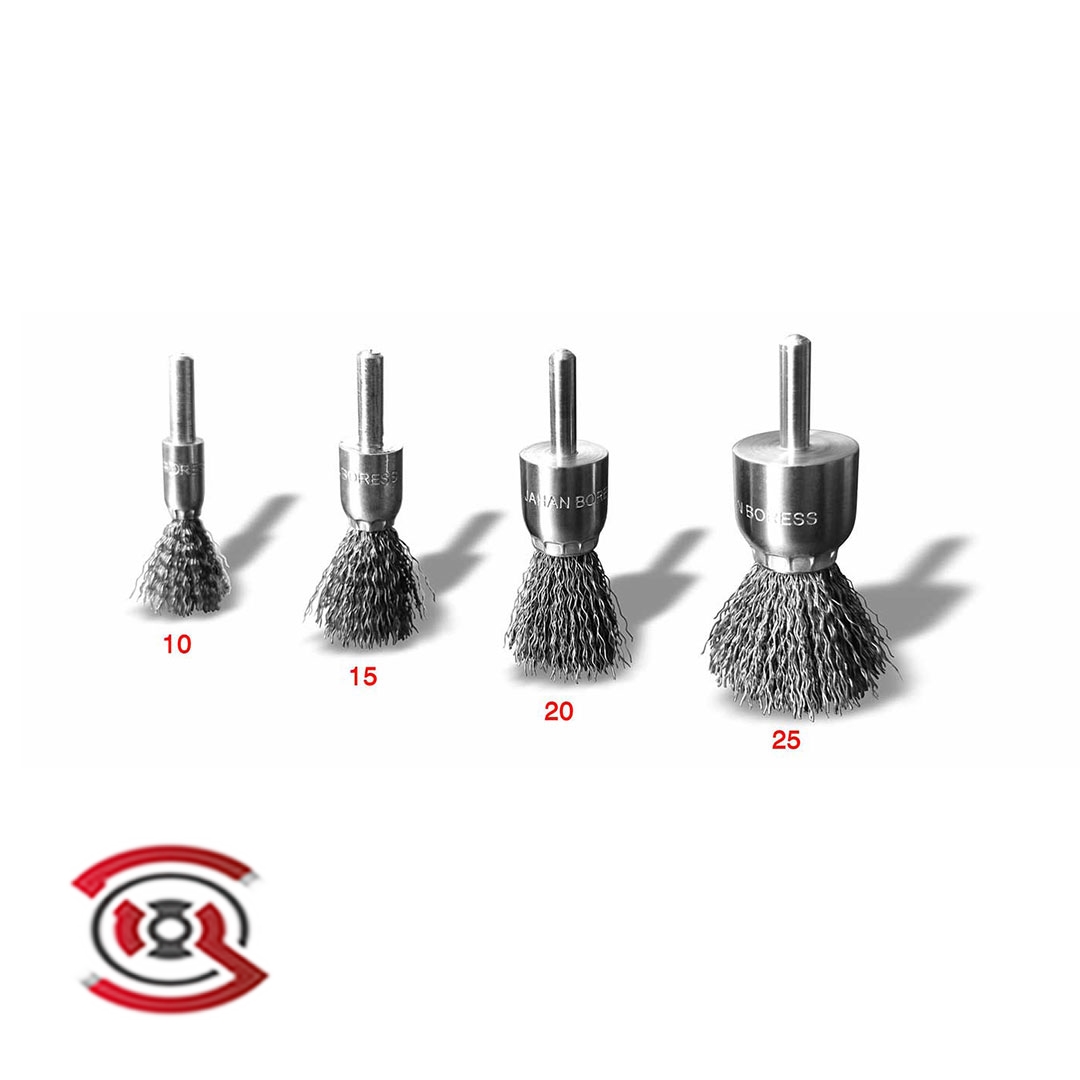Machinery: Cleaning industrial equipment
HVAC Systems: Duct and component cleaning

Wire drill brushes are specialized rotary tools designed to attach to electric drills for surface preparation, cleaning, and finishing operations. These versatile tools consist of wire bristles arranged in various configurations to tackle different cleaning and surface treatment tasks.
Wire brushes have been used for centuries in various forms, but the drill-mounted versions emerged with the widespread adoption of portable electric drills in the mid-20th century. Modern wire drill brushes incorporate advanced metallurgy and engineering for enhanced performance and durability.
| Component | Material | Function | Importance |
|---|---|---|---|
| Wire Bristles | Steel, Brass, Stainless Steel | Cleaning and abrading | Primary working element |
| Hub/Center | Steel or Plastic | Wire attachment point | Structural integrity |
| Shank | Hardened Steel | Drill chuck connection | Power transmission |
| Crimped Design | Various configurations | Wire retention | Safety and performance |

Image: Professional wire drill brush set for various applications
Always wear appropriate PPE when using wire brushes
Cup brushes feature wires arranged in a cylindrical cup formation, providing aggressive cleaning action for flat surfaces and inside corners.
| Size Range | Wire Length | Best Applications | Aggressiveness |
|---|---|---|---|
| 2" - 6" diameter | 0.5" - 1.5" | Large flat surfaces | High |
| 1" - 3" diameter | 0.25" - 0.75" | Detail work | Medium |
End brushes have wires extending from one end, ideal for reaching into holes, slots, and confined spaces.
Wheel brushes feature radial wire arrangement for edge cleaning and deburring operations.
| Brush Type | Diameter Range | Wire Gauge | RPM Rating |
|---|---|---|---|
| Cup Brush | 1" - 6" | 0.006" - 0.020" | 3,000 - 12,000 |
| End Brush | 0.5" - 2" | 0.004" - 0.014" | 5,000 - 15,000 |
| Wheel Brush | 2" - 8" | 0.008" - 0.025" | 2,000 - 8,000 |
| Specialty | Custom sizes | Various | Application specific |
Never exceed manufacturer's recommended RPM ratings
Carbon steel is the most common wire material, offering excellent durability and aggressive cleaning action for general-purpose applications.
| Property | Value | Advantage | Limitation |
|---|---|---|---|
| Tensile Strength | 150,000 - 300,000 PSI | High durability | Rust susceptibility |
| Hardness | 45-65 HRC | Aggressive cutting | Can mark soft metals |
| Cost | Low | Economic choice | Limited corrosion resistance |
| Temperature Limit | 400°F (204°C) | Good heat resistance | Oxidation at high temps |
Stainless steel wire provides corrosion resistance and is ideal for applications requiring contamination-free cleaning.
Brass wire offers non-sparking properties and is softer than steel, making it suitable for delicate surfaces and explosive environments.

Image: Various wire drill brushes showing different materials and configurations
Choose wire material based on workpiece material and application requirements
Wire drill brushes are extensively used in automotive repair and restoration for various surface preparation tasks.
| Application | Brush Type | Wire Material | Effectiveness |
|---|---|---|---|
| Concrete cleaning | Cup brush | Carbon steel | High |
| Metal deburring | End brush | Stainless steel | Very High |
| Pipe cleaning | End brush | Carbon steel | Medium |
| Aluminum finishing | Cup brush | Brass | Specialized |
Home users and maintenance professionals rely on wire drill brushes for various cleaning and restoration projects.
Not suitable for soft plastics or delicate surfaces
Can generate sparks - avoid in explosive environments
| Factor | Considerations | Impact on Performance | Selection Priority |
|---|---|---|---|
| Material Compatibility | Workpiece hardness and composition | Critical | High |
| Brush Configuration | Access requirements and surface geometry | Important | High |
| Wire Gauge | Aggressiveness vs. surface finish | Significant | Medium |
| Speed Rating | Drill RPM capabilities | Safety Critical | Very High |
Selecting the right wire drill brush involves balancing performance requirements with cost considerations and expected tool life.
Using wrong wire material for application
Exceeding recommended operating speeds
| Hazard | Risk Level | Prevention | Emergency Action |
|---|---|---|---|
| Wire breakage | Medium | Proper speed control | Stop immediately, inspect |
| Eye injury | High | Always wear protection | Flush with water, seek medical help |
| Cuts from wires | Medium | Proper handling technique | Clean wound, apply first aid |
| Brush disintegration | Critical | Speed limit compliance | Evacuate area, assess damage |
آدرس: اتوبان بعثت خ برادران قاسمی خ رضایی شرقی خ گشاده رو پ۲۰
آدرس کارخانه: تهران شور آباد خ مهدی آباد خ ۲۲ بهمن شرکت تهران پولیش
تلفن همراه: ۰۹۱۲۱۵۰۱۱۲۸
تلفن ثابت: ۰۲۱۳۶۳۱۸۵۰۶ (5 خط ویژه)
ایمیل: info@tehranpolish.com



